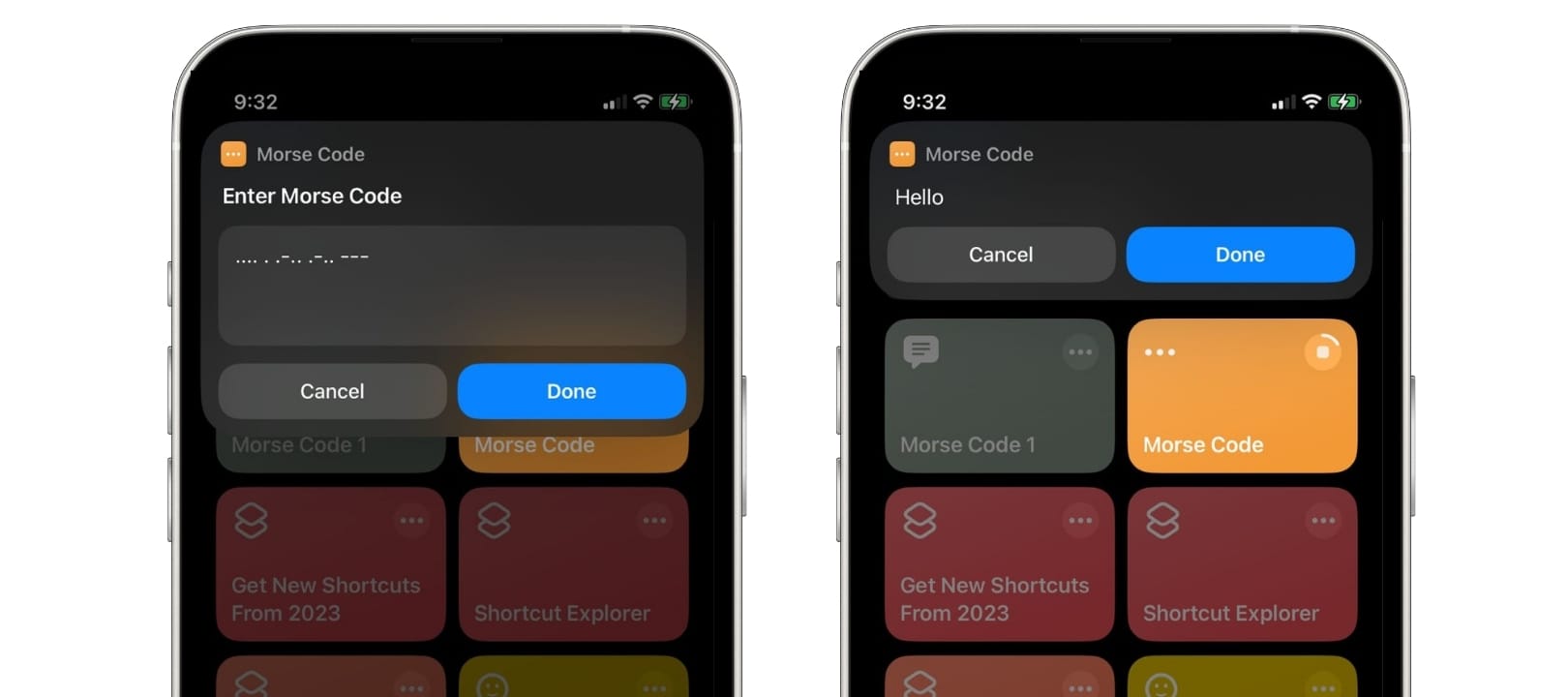Morse Code shortcut, fun for enthusiasts and useful for emergencies

In a world where ancient forms of communication find their place in the present, the resurgence of Morse Code stands out as a fascinating example of blending the old with the new. Thanks to the ingenious shortcut available on RoutineHub, Morse Code has experienced a revival that goes beyond mere nostalgia. In this article, we'll see more about the Morse Code shortcut, exploring how it transforms from a relic of the past into a versatile and practical tool for everyday life. Join us as we unravel Morse Code in the palm of your hand.

What is Morse Code?
Developed by Samuel Morse and Alfred Vail in the 1830s, Morse Code is a character encoding system that uses sequences of dots and dashes to represent alphanumeric characters. Each letter or number is uniquely represented by combinations of these two basic elements. Originally designed for telegraphy, Morse Code has proven to be durable and effective, even in the era of digital communication.
Traditional Use of Morse Code
Before the rise of modern technology, Morse Code found its primary application in telegraphic communication systems. Telegraph operators transmitted coded messages by interpreting sequences of dots and dashes representing letters and numbers. While efficient for long-distance communication, mastering Morse Code required skill and practice.
The Digital Resurgence: RoutineHub's Shortcut
Morse Code has recently taken center stage, and a notable example of this revitalization is the shortcut available on RoutineHub by developer @Avieshek. This shortcut not only translates messages into Morse Code but can also generate messages from sequences of dots and dashes.

How the Shortcut Works
The process is simple and efficient. By entering a message into the shortcut, it converts each character into its Morse Code equivalent. The output is presented in the form of sequences of dots and dashes, ready to be transmitted or interpreted as needed.

Beyond mere translation, the shortcut can also receive Morse Code messages and decode them into understandable text.

Utility of the Shortcut in Everyday Life
Beyond being a digital curiosity, this shortcut proves its utility in everyday life situations. Imagine finding yourself in a remote environment, whether exploring nature or stranded in the middle of a desert. In the absence of phone signals or Wi-Fi connections, the ability to communicate using Morse Code could be invaluable.
In emergency scenarios, where conventional communication methods may fail, Morse Code provides a reliable alternative with the SOS function.
SOS Function
The SOS function of the shortcut allows users to input a specific word that acts as an emergency signal. When activated, the shortcut translates the word into Morse Code and uses the phone's flash to transmit the signal. This intermittent flashing, universally recognized as a call for help, could make a difference in emergency situations.
An Ally in Cases of Disorientation or Danger
Imagine getting lost in a dense forest or facing danger in a remote mountainous area. In such critical moments, the SOS function of the shortcut can become your most reliable ally. By emitting Morse Code flashes, the shortcut provides the ability to attract attention, even in environments where other communication methods may fail.
Conclusion: More than a Game, a Life Tool
In summary, the resurgence of Morse Code through RoutineHub's shortcut is not just a fun exercise; it serves as a practical tool in real-world situations. This shortcut not only celebrates Morse Code's history but also updates it to meet emergency needs.
So, the next time you explore the functions of your Apple device, consider adding this shortcut to your collection. You never know when the ability to communicate in Morse Code could make a difference in an emergency.
